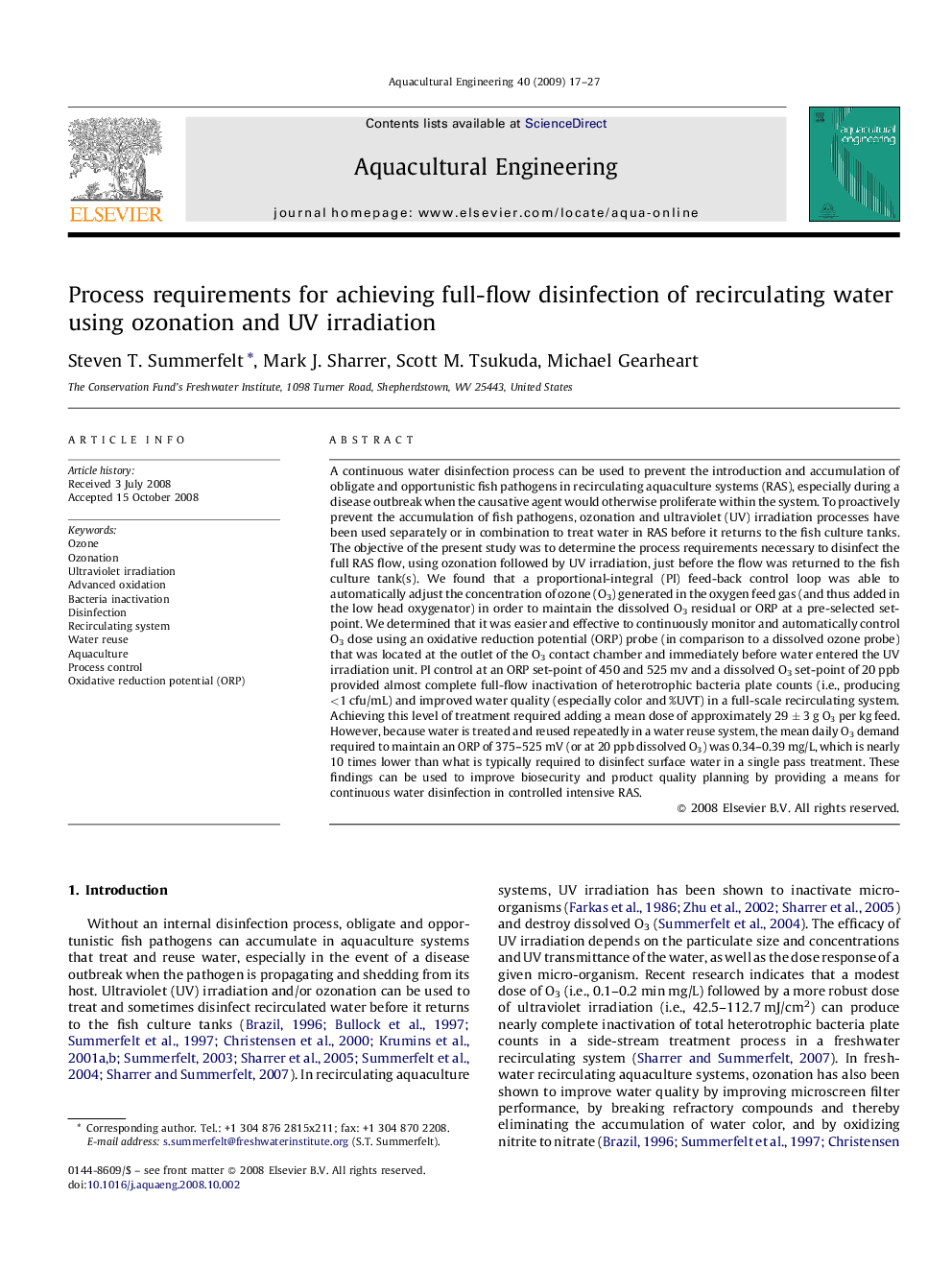| کد مقاله | کد نشریه | سال انتشار | مقاله انگلیسی | نسخه تمام متن |
|---|---|---|---|---|
| 6381539 | 1324098 | 2009 | 11 صفحه PDF | دانلود رایگان |
عنوان انگلیسی مقاله ISI
Process requirements for achieving full-flow disinfection of recirculating water using ozonation and UV irradiation
دانلود مقاله + سفارش ترجمه
دانلود مقاله ISI انگلیسی
رایگان برای ایرانیان
کلمات کلیدی
Aquaculture - آبزی پروریWater reuse - استفاده مجدد از آبUltraviolet irradiation - اشعه ماوراء بنفشOzonation - اوزون زنیOzone - اُزون advanced oxidation - اکسیداسیون پیشرفتهRecirculating system - سیستم گردش خونDisinfection - ضد عفونیBacteria inactivation - غیر فعال کردن باکتریProcess control - کنترل فرایند
موضوعات مرتبط
علوم زیستی و بیوفناوری
علوم کشاورزی و بیولوژیک
علوم آبزیان
پیش نمایش صفحه اول مقاله

چکیده انگلیسی
A continuous water disinfection process can be used to prevent the introduction and accumulation of obligate and opportunistic fish pathogens in recirculating aquaculture systems (RAS), especially during a disease outbreak when the causative agent would otherwise proliferate within the system. To proactively prevent the accumulation of fish pathogens, ozonation and ultraviolet (UV) irradiation processes have been used separately or in combination to treat water in RAS before it returns to the fish culture tanks. The objective of the present study was to determine the process requirements necessary to disinfect the full RAS flow, using ozonation followed by UV irradiation, just before the flow was returned to the fish culture tank(s). We found that a proportional-integral (PI) feed-back control loop was able to automatically adjust the concentration of ozone (O3) generated in the oxygen feed gas (and thus added in the low head oxygenator) in order to maintain the dissolved O3 residual or ORP at a pre-selected set-point. We determined that it was easier and effective to continuously monitor and automatically control O3 dose using an oxidative reduction potential (ORP) probe (in comparison to a dissolved ozone probe) that was located at the outlet of the O3 contact chamber and immediately before water entered the UV irradiation unit. PI control at an ORP set-point of 450 and 525 mv and a dissolved O3 set-point of 20 ppb provided almost complete full-flow inactivation of heterotrophic bacteria plate counts (i.e., producing <1 cfu/mL) and improved water quality (especially color and %UVT) in a full-scale recirculating system. Achieving this level of treatment required adding a mean dose of approximately 29 ± 3 g O3 per kg feed. However, because water is treated and reused repeatedly in a water reuse system, the mean daily O3 demand required to maintain an ORP of 375-525 mV (or at 20 ppb dissolved O3) was 0.34-0.39 mg/L, which is nearly 10 times lower than what is typically required to disinfect surface water in a single pass treatment. These findings can be used to improve biosecurity and product quality planning by providing a means for continuous water disinfection in controlled intensive RAS.
ناشر
Database: Elsevier - ScienceDirect (ساینس دایرکت)
Journal: Aquacultural Engineering - Volume 40, Issue 1, January 2009, Pages 17-27
Journal: Aquacultural Engineering - Volume 40, Issue 1, January 2009, Pages 17-27
نویسندگان
Steven T. Summerfelt, Mark J. Sharrer, Scott M. Tsukuda, Michael Gearheart,